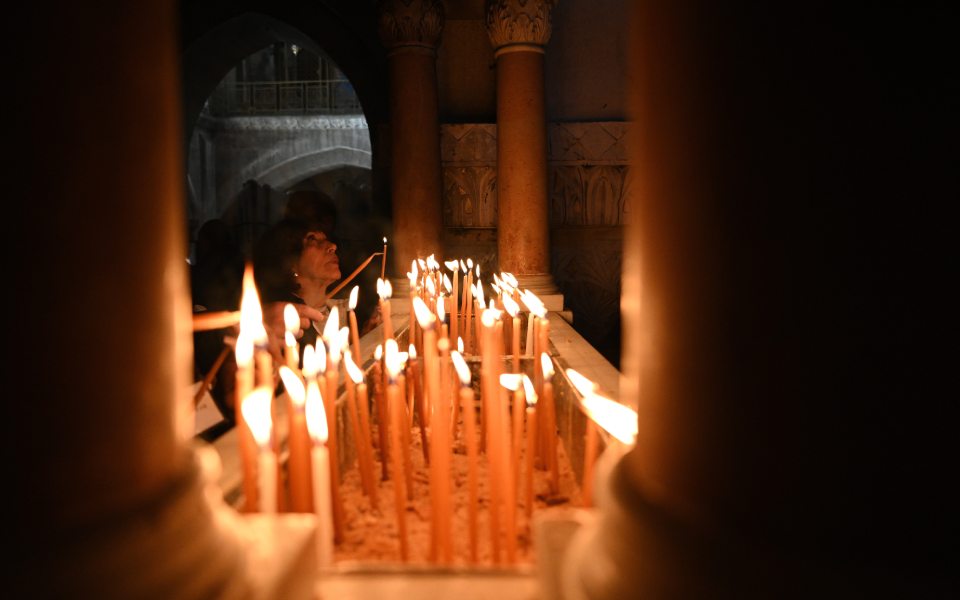Each year, on the day before Orthodox Easter (Pascha), a bright light is said to emit from inside the tomb of Jesus Christ in Jerusalem’s Church of the Holy Sepulchre. Described as a miracle by countless Orthodox Christian believers, the Άγιο Φως, or “Holy Fire” is a potent symbol of Christ’s resurrection (anastasis) from the dead.
According to church tradition, the Holy Fire is received by the Greek Patriarch of Jerusalem, who begins the ceremony by descending alone into the empty Edicule, a small shrine within the Holy Sepulchre that surrounds the tomb.
Before his arrival, the tomb is inspected for lighting equipment and the doors are sealed with beeswax and a cloth sash.
Once inside the tomb, the Patriarch kneels and prays.
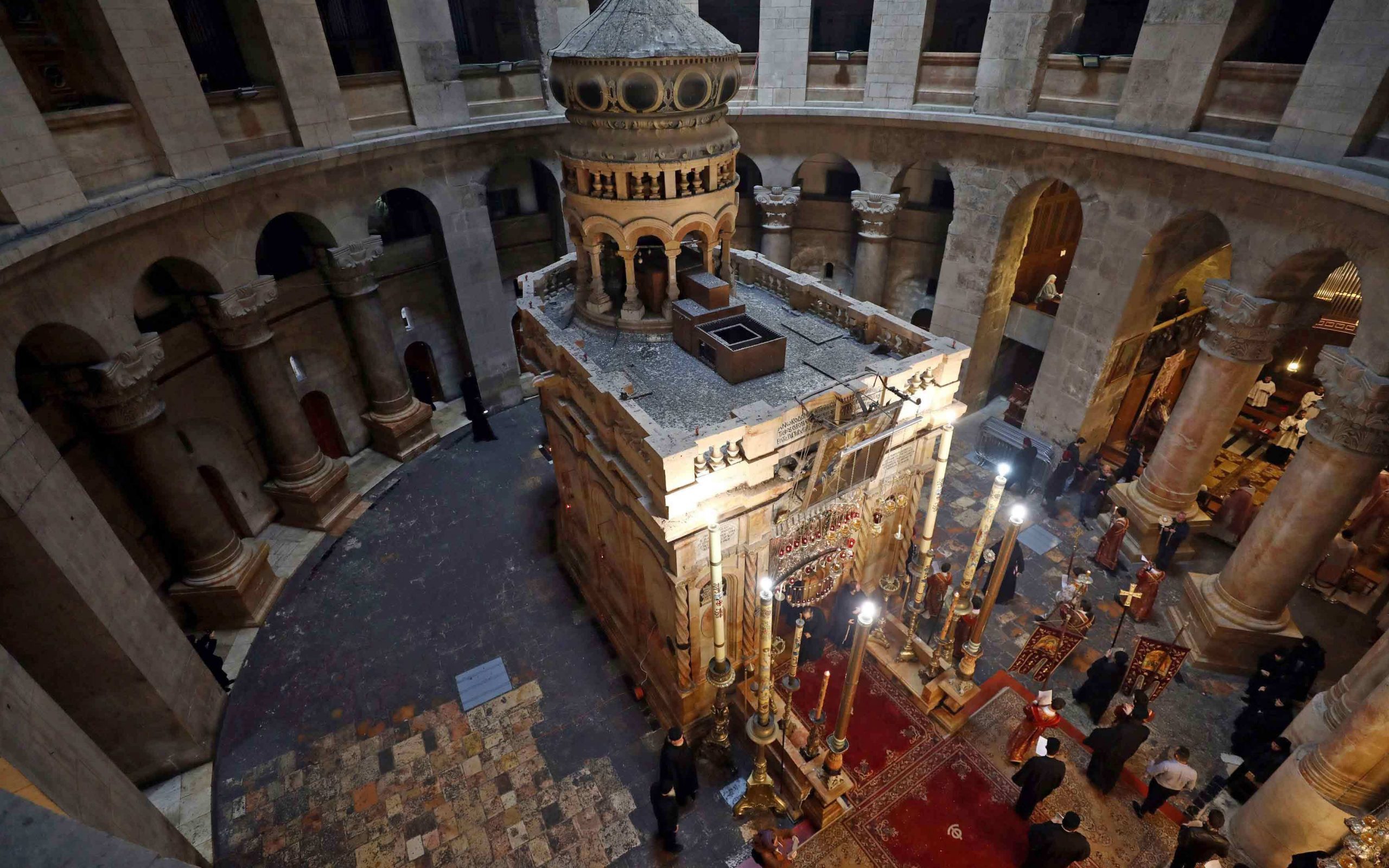
© Reuters
A light in the dark
Soon afterwards, the flame miraculously appears inside the tomb, often with a bluish hue, and rises as a column from the marble slab that covers the stone believed to be the resting place of Christ. The Patriarch, who has remained alone throughout, then lights bundles of 33 beeswax candles, representing the 33 years that Jesus spent on earth.
Diodorus, Patriarch of Jerusalem from 1980 to 2000 described receiving the Holy Fire from inside the tomb:
“I enter the tomb and kneel in holy fear in front of the place where Christ lay after His death and where He rose again from the dead … From the core of the very stone on which Jesus lay an indefinable light pours forth. It usually has a blue tint, … The light rises out of the stone as mist may rise out of a lake …”
The Patriarch then emerges from the Edicule, arms aloft, clutching the bundles of brightly burning candles in his hands. The Holy Fire joyfully passes around the assembled masses, from candle to candle, illuminating the once dark church in a blaze of heat and light.
It has been said that for the first few minutes after it emerges from the tomb, the fire does not consume. Many of the faithful “bathe” their hands and faces in the flame, a form of ritual cleansing.
When the award-winning Guardian journalist Victoria Clark travelled to Jerusalem to observe this remarkable event, she reported “gasps and cheers and sobs and tears” inside the church and described an “overwhelming” level of emotion coupled with a “suffocating” heat from the number of flames.
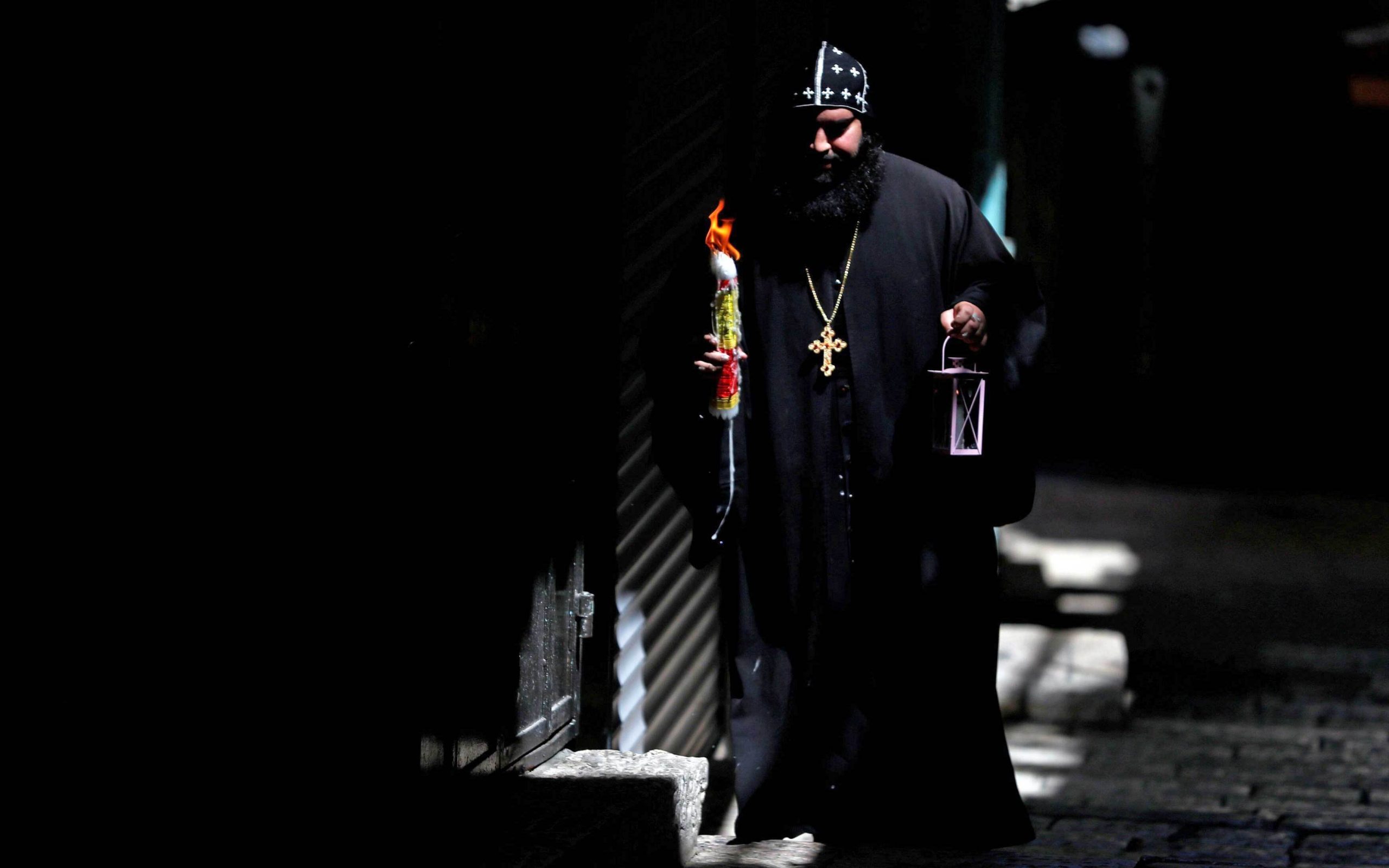
© Reuters/ Ammar Awad
Spreading the sacred flame
Before the Covid-19 pandemic, more than 10,000 faithful would gather inside and outside the Church of the Holy Sepulchre, chanting in unison “Kyrie eleison” (Lord, have mercy).
In 2020, in the wake of strict quarantine measures and the first lockdown, the ceremony was closed to the public for the first time since 1349, when an outbreak of the Black Death forced the holiest site in Christendom to barricade its towering wooden doors.
This year, we will likely see a similar event in the Old City of Jerusalem; a small gathering of clerics from six different Christian denominations that administer to the Holy Sepulchre, officers from Jerusalem’s police force, and a handful of camera crews broadcasting the event around the world.
Nevertheless, the ceremony will lose none of its potency and symbolism for the faithful, gathered instead around television screens in eager anticipation of the most celebrated event in the Orthodox religious calendar.
In previous years, the Holy Fire is quickly dispatched to the far-flung corners of the Orthodox Christian world. Carried in lanterns, the flame is taken by car to neighboring Orthodox communities in Egypt and Jordan, and further afield in the Middle East.
On the tarmac at Ben Gurion Airport in Tel Aviv, planes from a dozen nations await the arrival of a convoy of cars from Jerusalem. In special containers designed to transport an open flame in the pressurized cabin of an aircraft, dignitaries and clerics from countries with majority Orthodox Christian communities, including Greece, Cyprus, Russia, Georgia and the Ukraine, welcome the Holy Fire onboard.
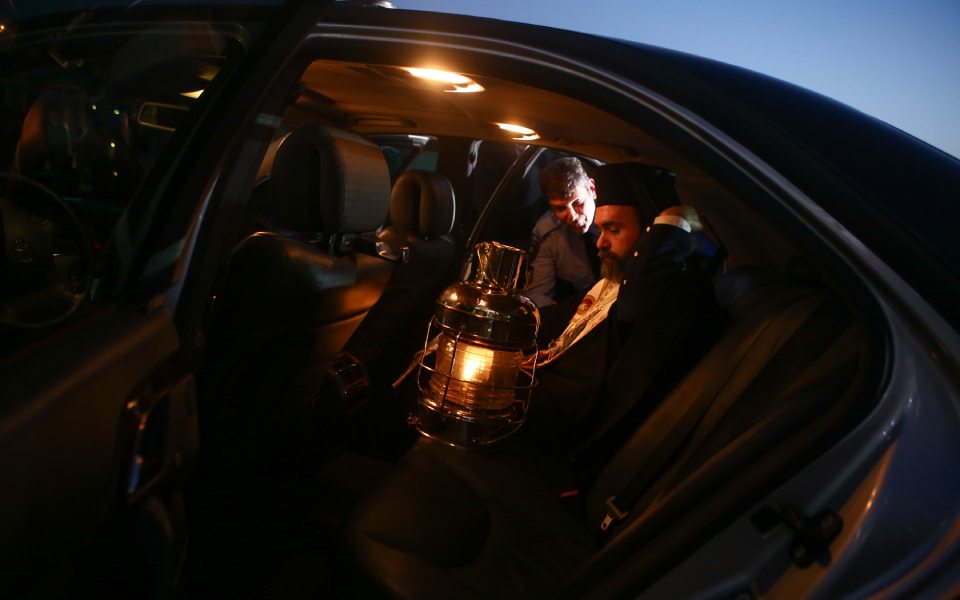
© Intime news
The transfer to Greece
In response to the ongoing pandemic, the transfer of the Holy Fire to Greece this year will again be subject to changes and restrictions.
In a statement today, April 29, the Deputy Foreign Minister Kostas Vlasis and Metropolitan Nikolaos of Mesogaia will travel to Jerusalem on Saturday, the eve of Orthodox Easter, and transfer the Holy Fire back to Athens.
In a break with tradition, the returning delegation will not be welcomed at Athens International Airport with the kind of arrival reception reserved for visiting heads of state. Instead, the ceremony will take place with “due humility and modesty” as the situation demands.
From the airport, the Holy Fire will be taken by 12 aircraft from two airlines to cities around Greece, including Thessaloniki, Alexandroupolis, and Ioannina, where it will be transferred to local parishes.
A further change this year is the decision to hold the Resurrection service at 9 pm instead of the usual midnight.
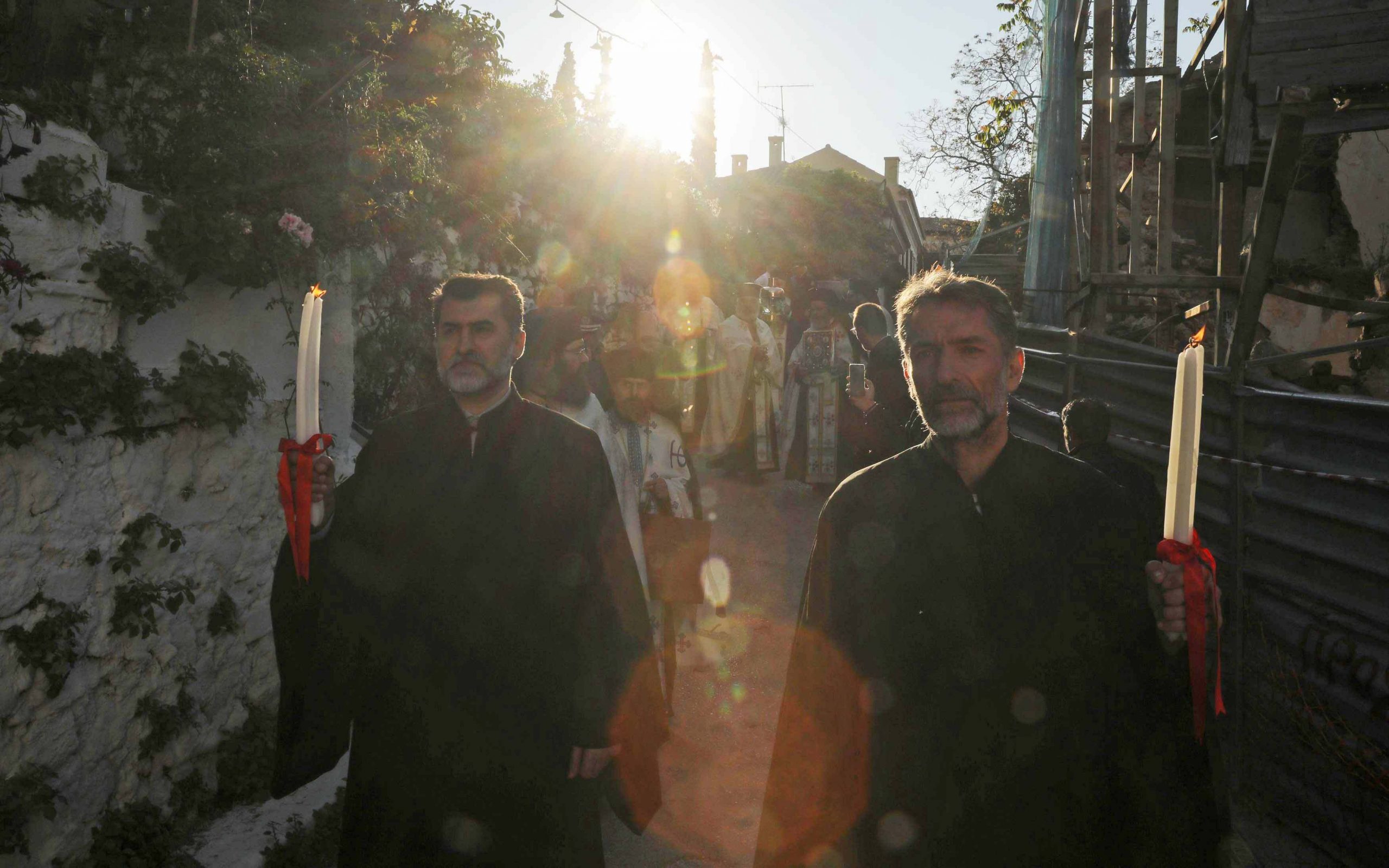
© Reuters/Costas Baltas
A ceremony with a long history
The annual miracle of the Holy Fire was first recorded by a French monk in the year 876, but its long history has not been without controversy.
In 1009, the Muslim ruler of Jerusalem was so enraged by what he saw as the “fraud” of the annual ceremony that he destroyed the Holy Sepulchre.
After it was rebuilt 40 years later, at great financial expense to the Byzantine emperor Constantine IX Monomachos and Patriarch Nicephorus of Constantinople, the Great Schism of 1054 ripped the Christian world in two: the Orthodox East, with its head in Constantinople, and the Catholic West, in Rome.
Two centuries later, Pope Gregory IX, head of the Roman Catholic Church, forbade his followers from taking part in the ceremony.
For the last 800 years, the ceremony of the Holy Fire has endured wars and plagues, and while the western half of Christendom no longer takes part, it remains a sacred and much-cherished tradition for millions of Orthodox faithful.
Many Christians in the West liken the miracle of the Holy Fire to the ritual of Holy Communion, when the bread and wine become the body and blood of Christ (transubstantiation, or metousiosis). In essence, the natural is transformed into the supernatural.
Nevertheless, while the age-old ceremony is not without its doubters or critics, the annual miracle of the Holy Fire is still the most anticipated and celebrated event in the Orthodox calendar.
Kali Anastasi!

